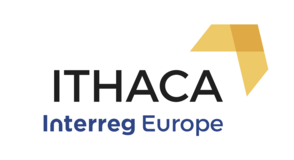Liverpool has a well-established Telehealth clinical hub, where the community nursing provider, Mersey Care Foundation Trust, uses Docobo technology to provide remote monitoring and support to thousands of patients in their own homes. The service has focussed on high-risk Chronic Obstructive Pulmonary Disease (COPD), Heart Failure, and Diabetes patients. It aims to coach patients to manage their condition better, improve their lives, and avoid hospital admissions.
The service accepts hospital referrals, but Liverpool had struggled to get the hospitals to use the technology themselves to monitor their own patients. In December 2019, an ITHACA knowledge transfer with Slovenia helped Liverpool to develop action plans to implement Telehealth in a hospital setting to monitor and support cancer patients remotely, using a type of ‘Virtual Ward’ model.
Unfortunately, in March 2020, these plans were interrupted by the first wave of the Covid-19 pandemic hitting the UK. As the number of Covid patients rose exponentially, there was genuine concern that acute hospitals might not have the capacity to treat everyone. Because of this, the priority for Telehealth quickly became increasing hospital capacity or reducing demand somehow.
By April 2020, two new Telehealth clinical pathways were established.
The first was aimed at preventing clinically extremely vulnerable patients with COPD from needing hospital treatment. Because of the serious consequences of them catching Covid, all such vulnerable patients were advised by the government to ‘Shield’ themselves by staying in their homes and not going out in public at all.
NHS England approved additional Covid funding to rapidly scale up Liverpool’s Telehealth service to support these high-risk patients and by July over 2,500 extra patients were being supported to manage their condition whilst isolating.
The second change was to work with the local acute hospital to establish a Virtual Ward model. This would allow some patients recovering from Covid to be safely sent home earlier, with the hospital monitoring them remotely. A Telehealth system Care Plan was created to mimic the information normally collected in the hospital, with three-times-a-day symptom checks and vital sign readings collected remotely. Patients were given a tablet device, plus a thermometer, BP meter, and Pulse Oximeter to enable them to take their own readings.
As well as responding to any automated alerts raised by the system, hospital nurses would review the data and call each patient daily to discuss their condition. Later each day, the hospital consultant would meet the nurses to conduct a ‘virtual’ ward round to ensure all patients were recovering as expected.
During the first wave, the new Covid Virtual Ward supported 27 patients, reducing the length of their hospital stay by an estimated five days each. The virtual ward was also more efficient for hospital staff, taking a fraction of the nurse and consultant’s time, compared to a normal ward.
Based on the experience of Liverpool and several other areas, for the larger second Covid wave, NHS England recommended that all hospitals should create virtual wards to grow their capacity. In Liverpool, the community nursing provider recognized the intense pressure that the hospital respiratory team was under and offered mutual aid to help them. In the collaborative conditions created by Covid, the virtual ward model was refined so that the day-to-day work of contacting patients and checking the data was undertaken by nurses in the Telehealth hub. The community nurses were given access to the hospital consultant to escalate any urgent concerns, as well as having a daily meeting with them to review each patient. Between September 2020 and March 2021, another 115 patients were supported in this way.
The work has shown that a Virtual Ward model can be safe, efficient, and more cost-effective. By offering hospital patients a supported step-down back to their normal lives, it is also expected that it will encourage recovery and reduce unnecessary readmissions.
One valuable lesson is that to be sustainable, such changes need to be properly embedded into the hospital's roles and structures. The hospital consultants gladly accepted clinical responsibility for the virtual ward during the height of the pandemic, however, in their normal role they have made it clear that they have no time allocated to support another ward, even a virtual one!
This has not stopped some hospital leaders from seeing the potential of the Virtual Ward model, and discussions are currently taking place about adapting it to enable early supported discharge of both Heart Failure and respiratory patients.











